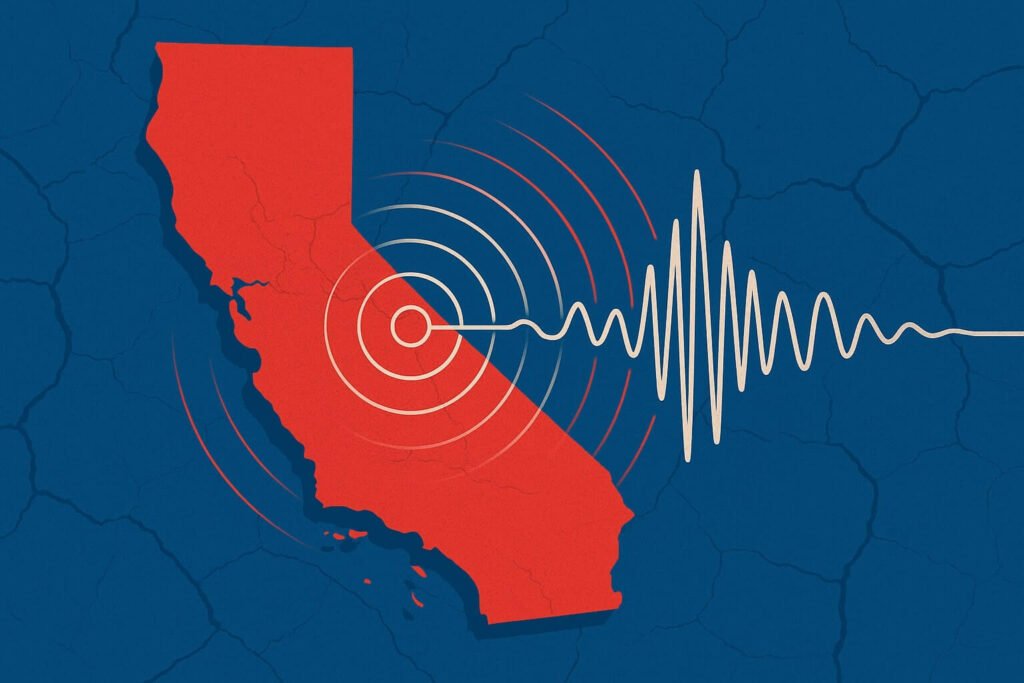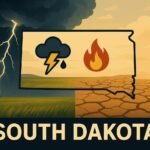California didn’t sleep completely sound last night. While no buildings fell, and no highways buckled, the ground still sent out a subtle but undeniable message: it’s alive beneath us, always shifting. The earthquake now west of Los Banos, a magnitude 3.6 tremor, was enough to rattle dishes, stir nerves, and reignite conversations about California’s fragile geology. It wasn’t catastrophic, but it wasn’t meaningless either. This blog post breaks down what happened, why it matters, and how these seemingly small quakes fit into the bigger seismic picture across the Golden State.
A quiet jolt, a louder message
At 6:37 p.m. on Monday evening, just west of Los Banos in California’s Central Valley, a shallow magnitude 3.6 earthquake struck at a depth of only 2 kilometers. That’s close to the surface, making it more easily felt than deeper quakes of the same size. Light shaking was reported in nearby towns like Dos Palos, Gilroy, and Santa Nella, with some residents as far north as Hollister saying they noticed it. No injuries or property damage occurred, and emergency services didn’t need to mobilize. Still, for a region that lives with a tectonic heartbeat, every quake matters.
The quake’s location places it along the Ortigalita fault zone, a lesser-known but active fault that runs along the edge of the Diablo Range. This isn’t the iconic San Andreas Fault, but it’s closely connected. Energy builds, shifts, and transfers through this intricate web of fractures. Think of the fault system like a series of pressure valves; even a small movement on one line can echo elsewhere across the plate boundary.
USGS data confirmed at least three measurable aftershocks within ten minutes of the initial quake, ranging between magnitude 2.5 and 3.0. These smaller shocks fizzled quickly, with no signs of escalation, but they’re a reminder that after every tectonic twitch, we hold our breath just a bit, watching to see if it was a prelude to something larger.
Quakes in clusters, patterns in chaos
What makes the earthquake now more than a single dot on the map is how it fits into the broader seismic activity across the state. California logged more than 110 earthquakes on June 30 alone, most under magnitude 2.0 and many too small to be felt. But they weren’t random. They clustered in familiar zones: the Geysers geothermal field in Northern California, where injected fluids from power operations routinely cause microquakes, and the Petrolia coast near the Mendocino Triple Junction, where three tectonic plates press and pivot beneath Humboldt County. Both locations had minor tremors overnight, reminding researchers that these regions remain among the most geologically dynamic in the U.S.
In Southern California, a barely noticeable M1.1 event struck near Big Bear City around 5:30 p.m., reinforcing that tension along the San Bernardino stretch of the San Andreas Fault continues to build quietly. Though too small to stir alarm, these micro-quakes feed data into early-warning systems like ShakeAlert and inform the models used by seismologists at Caltech and the USGS.
Looking further back into 2025, the largest California earthquake so far was a magnitude 4.1 off the Malibu coast in March. That event, felt throughout parts of L.A., was a stronger reminder that the state’s energy budget for big earthquakes has remained modest this year. But history shows that silence, or even low activity, doesn’t mean safety. The ground doesn’t follow our schedules.
Preparing during the calm
One of the most valuable things about tracking a moderate earthquake now is the chance it gives us to reset. You don’t need a cracked sidewalk or toppled chimney to get serious about earthquake preparedness. In fact, it’s in the quiet moments that the most meaningful preparation happens. After all, when the big one comes, it won’t give us a countdown.
Here’s where to start:
- Secure the essentials: Tall bookcases, water heaters, and flat-screen TVs should all be anchored securely. Flexible gas connectors reduce fire risk during a jolt.
- Update your go-bag: Every household should have a kit with water, snacks, first aid, flashlights, chargers, and a hard copy of emergency contacts. Don’t forget your pets’ supplies.
- Know your structure: If your home was built before 1980, it may lack the proper retrofit. Bolting the frame to the foundation and bracing cripple walls can save lives.
- Practice response: Drop, cover, and hold on isn’t a slogan, it’s your best move. Drill it, especially with kids.
- Enable alerts: Make sure your phone has Wireless Emergency Alerts and the MyShake app enabled. The few seconds they offer can save time and prevent injuries.
While the earthquake now in California didn’t disrupt highways or knock over buildings, it did what small quakes do best—it reminded us. It reminded us that we live in a landscape shaped by invisible forces. That the Earth isn’t quiet just because it’s still. That being unprepared isn’t a badge of optimism, it’s a blind spot. There’s no need for fear, just for attention. Seismic risk in California is a long game, and we win it not by waiting for disaster, but by treating every rumble like a rehearsal.


